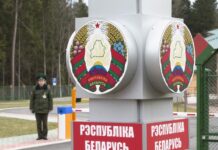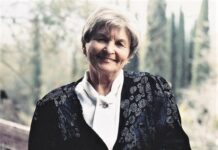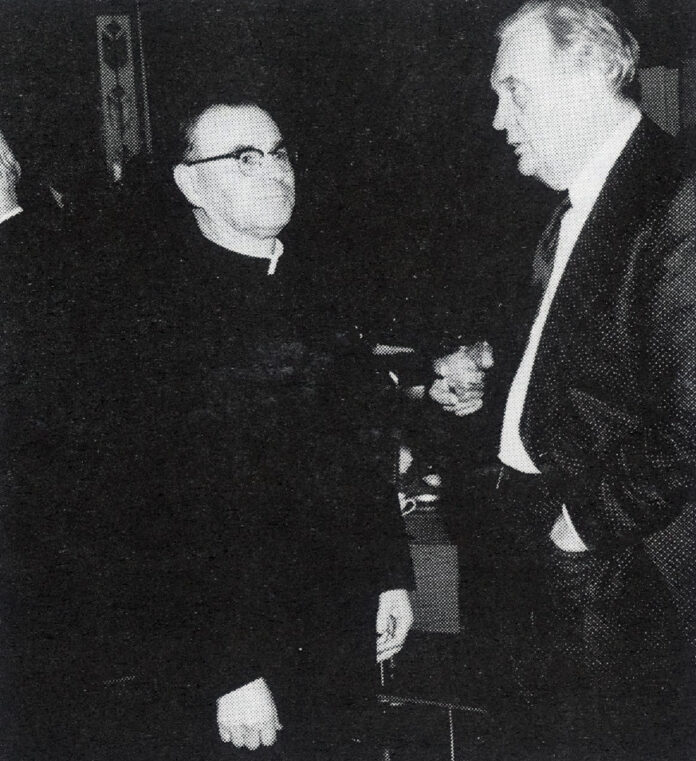
In 1961, both the newspaper and the community suffered a major shock when Editor-in-Chief Dr. Šapoka died suddenly of a heart attack on March 9, at the age of 55. Not only a historian and editor, he was also a vital member and builder of the Lithuanian community, both in Canada and abroad, having assisted in structuring the World Lithuanian Community organization. Among other projects, he had begun a history of Lithuanian Catholics in Canada. An interesting note for Ontarians – in the obituary for him, Rev. Gaida wrote that it was Šapoka‘s idea to erect a Lithuanian cross by the Martyrs‘ Shrine in Midland, Ontario, where annual Masses took place for Lithuanian pilgrims.
Upon Šapoka’s death, Gaida was immediately called into action as Editor-in-Chief, and held this position until 2010. He was assisted by educator Antanas Rinkūnas, president of the Lights Publishing company, who wrote in his memoir that due to the Reverend’s health issues in those first years, Rinkūnas had often carried the editorial burden by himself. He was briefly assisted by Rev. Kornelijus Bučmys, OFM. By 1965 the shareholders of the Lights decided to close the printing company, because sustaining or expanding it would have required additional funding and personnel that were not available. It merged with the “Žiburiai” RC Lithuanian Cultural Society, which was registered as a non-profit corporation in Ontario that same year.
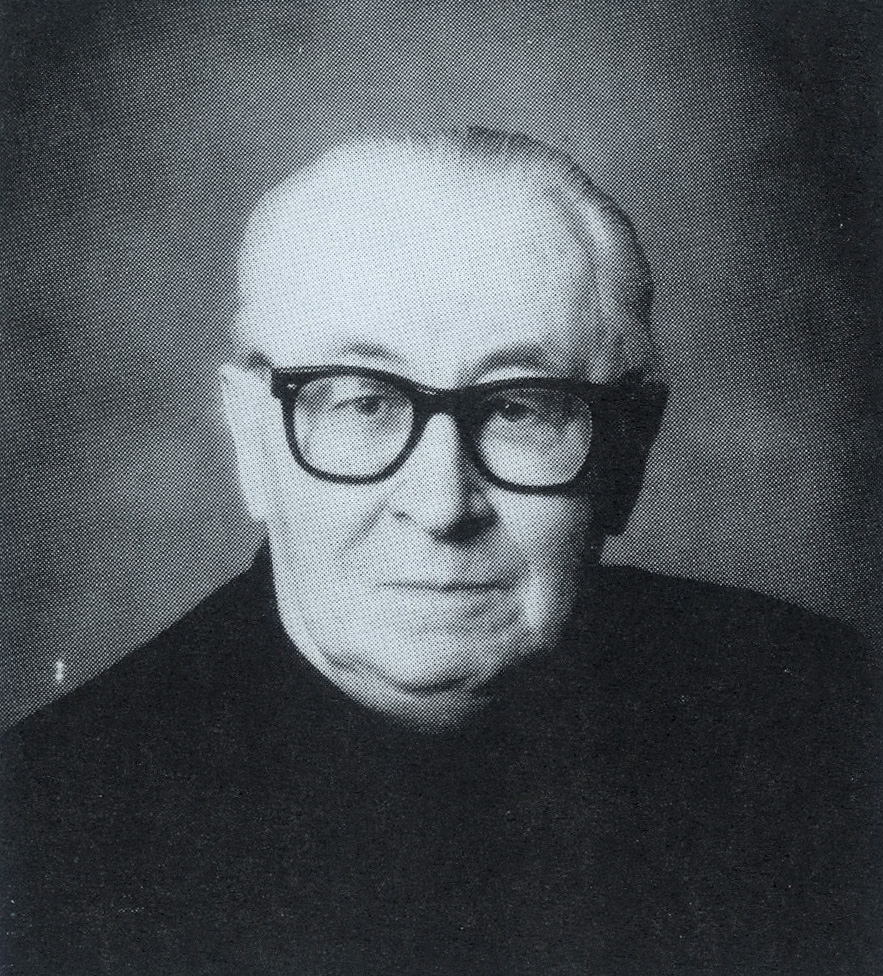
By then the newspaper’s logo and masthead had been redesigned by artist Telesforas Valius, together with attractive headings for regular columns introduced by Rev. Gaida – Youth, Women, and Little Readers, among others. The women’s section was dropped once the magazine “Moteris” (Woman) began publication in Toronto. The newspaper steadily published two to three pages of advertisements, both commercial and cultural, for community events, small businesses and government services. Stories and book excerpts were published in installments. In the later 1960’s, K. Otto from Montreal and V. Balčiūnas from Argentina took over from previous printing staff, continuing with the linotype process. Vytautas Kastytis Tvardauskas, who had started as a linotypist, became editorial assistant to Gaida and wrote a number of weekly news and cultural columns for many years.
Rev. Gaida became a leading light in the Lithuanian diaspora press, and maintained an excellent journalistic standard in the newspaper as well as a strict Lithuanian language level which deterred some potential writers, but encouraged others to improve their style. The editor-in-chief was particularly attentive to young writers, poets and artists, and nurtured their talents throughout the decades, consistently urging them to contribute their work and even assigning them front page artwork or articles to provide a platform for their skills.
In a wider context, the decade was known for the civil rights movement, the Vietnam War and antiwar protests, countercultural movements, political assassinations and the emerging “generation gap”. These were points of discussion in the community as well. Although for Canadians the civil rights issue was somewhat remote, the Vietnam war served to reinforce anti-communist feelings. Lithuanian youth was fully aware of the generation gap in their community, and had begun organizing the World Youth Association as early as 1966, calling for a voice in the Lithuanian diaspora. The weekly newspaper was a willing forum for youth issues – as long as they were not overly radical and upheld patriotic values.
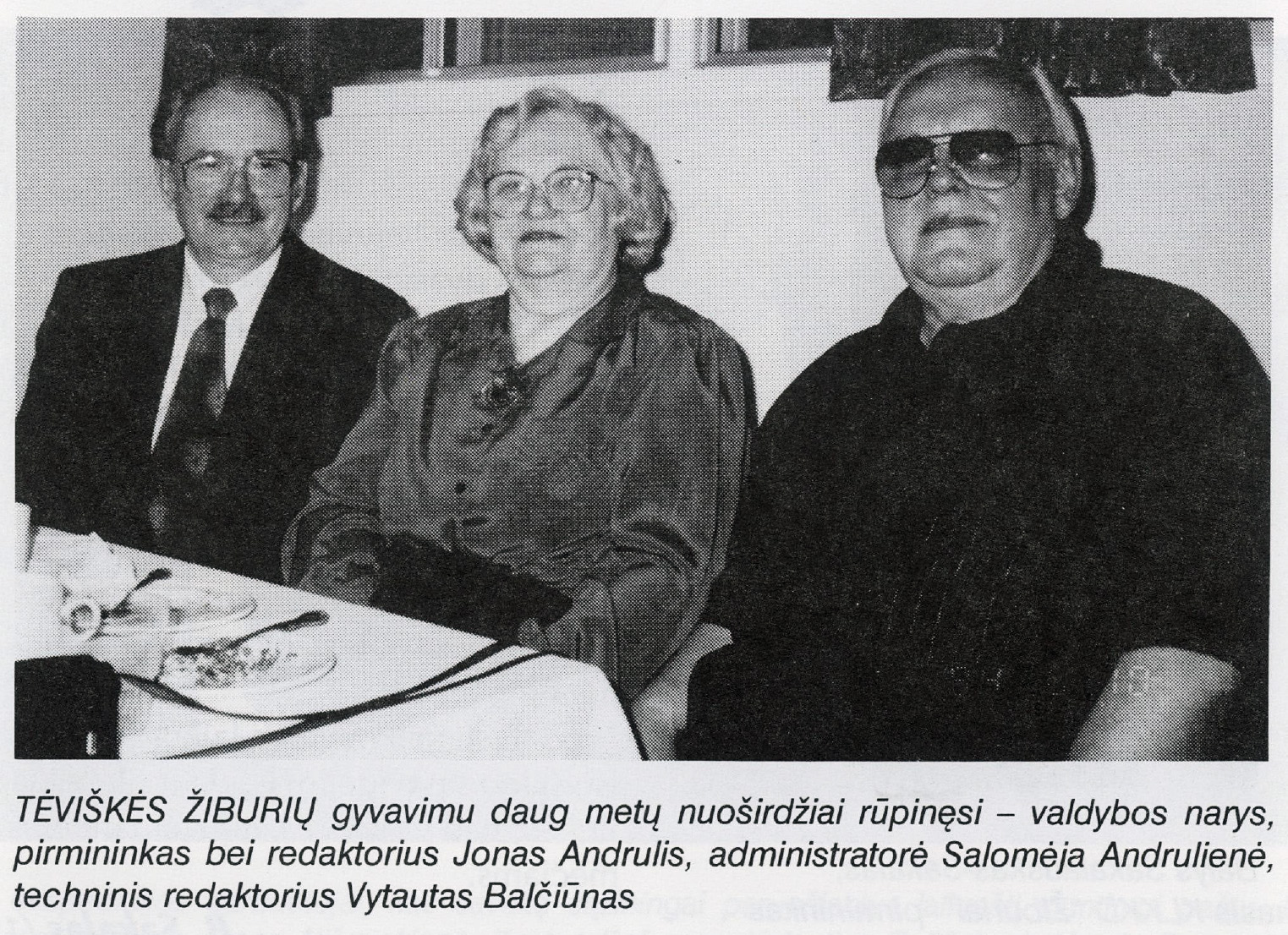
In December, 1968, Rev. Gaida was one of 200 representatives of Canadian ethnic communities invited to a conference at the King Edward Hotel in Toronto, chaired by Senator P. Yuzyk, under the auspices of the Secretary of State and the Department of Immigration. It was a discussion about the importance of the various immigrant cultures in Canada, and heralded a momentous change. These groups would form a “third voice”, along with the English and the French, shaping a multicultural policy in Canada and usher in an important new era.










